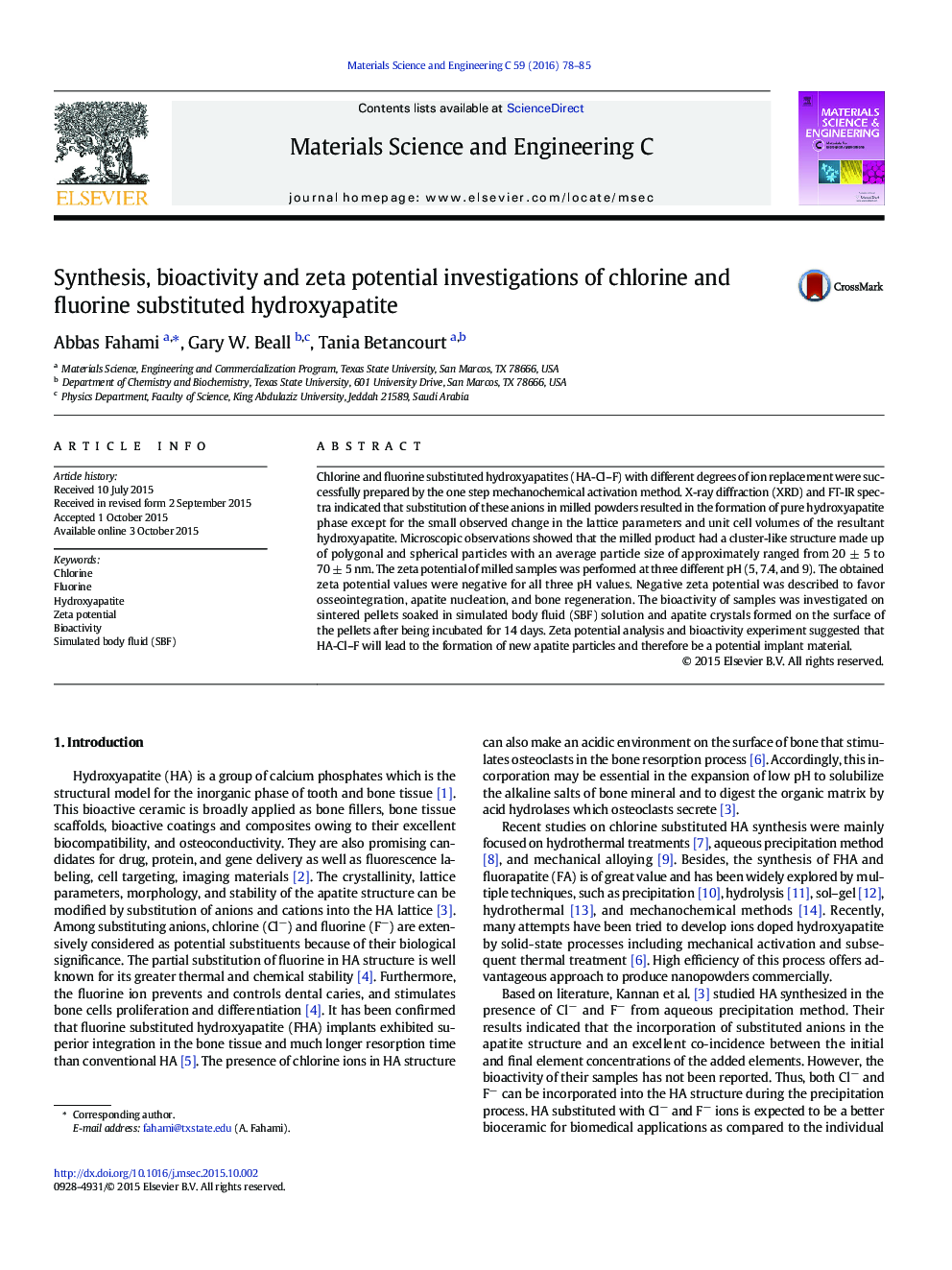| Article ID | Journal | Published Year | Pages | File Type |
|---|---|---|---|---|
| 7868281 | Materials Science and Engineering: C | 2016 | 8 Pages |
Abstract
Chlorine and fluorine substituted hydroxyapatites (HA-Cl-F) with different degrees of ion replacement were successfully prepared by the one step mechanochemical activation method. X-ray diffraction (XRD) and FT-IR spectra indicated that substitution of these anions in milled powders resulted in the formation of pure hydroxyapatite phase except for the small observed change in the lattice parameters and unit cell volumes of the resultant hydroxyapatite. Microscopic observations showed that the milled product had a cluster-like structure made up of polygonal and spherical particles with an average particle size of approximately ranged from 20 ± 5 to 70 ± 5 nm. The zeta potential of milled samples was performed at three different pH (5, 7.4, and 9). The obtained zeta potential values were negative for all three pH values. Negative zeta potential was described to favor osseointegration, apatite nucleation, and bone regeneration. The bioactivity of samples was investigated on sintered pellets soaked in simulated body fluid (SBF) solution and apatite crystals formed on the surface of the pellets after being incubated for 14 days. Zeta potential analysis and bioactivity experiment suggested that HA-Cl-F will lead to the formation of new apatite particles and therefore be a potential implant material.
Related Topics
Physical Sciences and Engineering
Materials Science
Biomaterials
Authors
Abbas Fahami, Gary W. Beall, Tania Betancourt,
